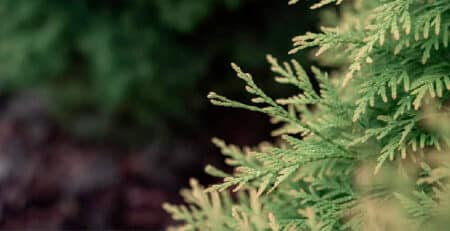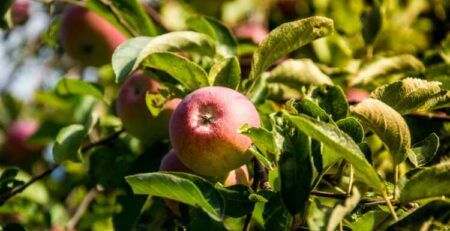 How Do Trees Communicate With Each Other?
How Do Trees Communicate With Each Other?
Science is pretty impressive, and we learn more and more about the world around us every day through science. The natural world is fascinating and mysterious, and trees rank as one of the wonders of nature. The lifeblood of the Earth, trees help us to breathe, and they nurture our planet. Every year, we learn more about trees and the essential role they play in protecting the planet.
One of the most amazing things about trees is that they can communicate with one another. They achieve this in different ways, and the more we learn about them, the more fascinating they are. This post explores how trees communicate with each other, and it’s more complex and impressive than most of us would think. Trees are living, breathing organisms linked and tied to one another. And via the process of communication with other trees, they can grow stronger.
So let’s delve a little deeper into this and look at how trees communicate with each other and what this means. It’s fascinating to learn about this process, the different ways it occurs, and what this means. Trees communicate in different ways, which isn’t surprising with how connected the natural world is. Close-knit ecosystems rely on each other to survive and thrive, and trees are integral to this. They cooperate to grow as strong as possible, and how they achieve this is pretty amazing.
 Wood Wide Web
Wood Wide Web
How do trees communicate? Well, trees communicate via a complex series of underground networks, which helps them survive. This in-depth process is almost like the natural equal of the internet.
They Have a Complex Network
Humans interact through the complex technology of the internet and digital space. Similarly, trees use a complex underground network of roots and fungi to send messages to each other. All the trees in a forest connect beneath the surface via a labyrinthine network of roots and fungi living in the soil. This is a process called the mycorrhizal network and is an example of symbiosis. Symbiosis is the close interaction between two biological organisms that helps them flourish. It’s an essential part of the process and necessary for the entire forest to thrive.
What is a Mycorrhizal Network?
Mycorrhizal networks are underground networks of fungi that connect individual plants and organisms. They serve a crucial purpose in the communication and interaction between plants and trees. And this is vital for their continued support and nurture. These networks serve many purposes that help to improve the health and growth of the trees. The main purpose is to transfer carbon, nitrogen, water, and other nutrients to help trees grow. The formation of these networks can vary, but the complex and wide-reaching nature has risen to the name Wood Wide Web. This is, of course, a play on the World Wide Web, the giant web resources accessible via the internet.
Just as important as how do trees communicate is how they share resources. Besides the fungi sharing essential resources with trees, the trees also share vital resources. This is a big factor in their communication process. Trees use the fungal network to transfer much-needed nutrients to other trees. This is a process that works like a mother suckling her young. And it’s a key way in which the older trees nurture saplings and allow them to grow and thrive. Saplings aren’t large enough to get the light they need for energy by themselves. But bigger trees can help to give them nutrients via the underground network.
The Benefits of Tree Communication
There are plenty of benefits to trees communicating with each other, which can benefit the forest as a whole.
They Talk!
Besides sending nutrients and water to each other, trees often use these networks to talk. This can take on many different forms and help trees look after or defend themselves. Trees will often send signals and warnings to one another about the disease, drought, or infestations! Trees can use these signals to change their behaviour and defend themselves. This is something scientists have only found out in recent times, and it’s changed the way we understand trees. Symbiotic fungal networks allow for strong communication and connectivity between the trees. This network runs through the forest, allowing the older trees to look after the saplings. In the process, this helps the forest ecosystem thrive as much as possible.
 Osmosis
Osmosis
How do trees communicate? One of the most amazing things about the communication process between trees is that it’s not limited. Different species of trees can communicate and share nutrients. This is something that was previously unknown and explained how trees interact. Douglas firs and paper birch are two different species (coniferous and deciduous). And they both share valuable nutrients when they are strong and healthy. They can do this depending upon the different seasons and which tree is thriving. This form of osmosis allows the trees to transfer important minerals and nutrients back and forth, despite not being the same species. But, some plants, like orchids, take from other plants and don’t return the favour!
Other Communication
Other forms of communication trees use to keep in touch, share information, and warn each other.
Electrical Pulses
Electrical pulses are one of the most fascinating methods trees use to keep in touch. They send hormonal electrical pulses across the underground fungal network. This is a process that scientists are only just beginning to understand. These electrical pulses work similarly to the nervous systems in animals. They use these electrical pulses to indicate distress and possible danger. Trees and plants exchange them as warning signs and use crackling sounds in their roots to warn other trees. Much like a dog whistle, these cracklings occur at a volume inaudible to humans. So how do trees communicate with each other when there is no distress or alarm if indeed they do? Scientists remain unclear about this, but it seems to be a source of great interest.
 Airborne Communication
Airborne Communication
Using electrical pulses, trees also use airwaves as a way of communicating with each other. They also use scent signals and pheromones to deploy defence mechanisms! For instance, Acacia trees emit airborne gas as a distress signal when distressed. And they use this gas to communicate with other trees in the surrounding area so that they can help out. When lots of trees release this gas at the same time, it can function as a repellent. And this drives away the herbivores that feed on the leaves of the plants and trees. It’s pretty incredible to see the different ways in which trees can communicate when they are under threat.
Trees Have Other Senses!
As well as communicating via electrical pulses and fungal networks, trees have other senses too. Scientists have discovered they also have a sense of smell! Indeed, trees can detect scents through their leaves, which can warn them of threats. Additionally, trees can taste, which plays a crucial role in self-preservation. Detecting threats through taste allows them to take action to fight against this. Nature is pretty amazing at times, and we always seem to be learning more about how it works. There are so many things trees are capable of doing via communication that we are unaware of. Finding out more about this opens up other avenues of discovery as to what trees are capable of.
A Delicate Ecosystem
The forest and trees make up a delicate and intricate ecosystem. Every living organism has a role and serves a purpose within this ecosystem. These networks are essential to the survival and growth of trees, plants, and forests. But climate change, deforestation, and clear-cutting are having a devastating impact on this. They are destroying the forests and the natural ecosystem the trees have developed. It impacts these intricate networks, which are critical to how and why trees talk to each other. As such, it is more important than ever to look for ways of looking after the environment.
Trees interact in so many ways, and it is fascinating seeing the different methods they have for communicating. Their sophisticated fungal networks drive essential nutrients to the plants and trees that need them the most. Additionally, they send out distress signals when they feel threatened or worried. Trees behave and communicate more like animals and humans than we think. Scientists are starting to study their behaviour and how they talk more than ever these days.







